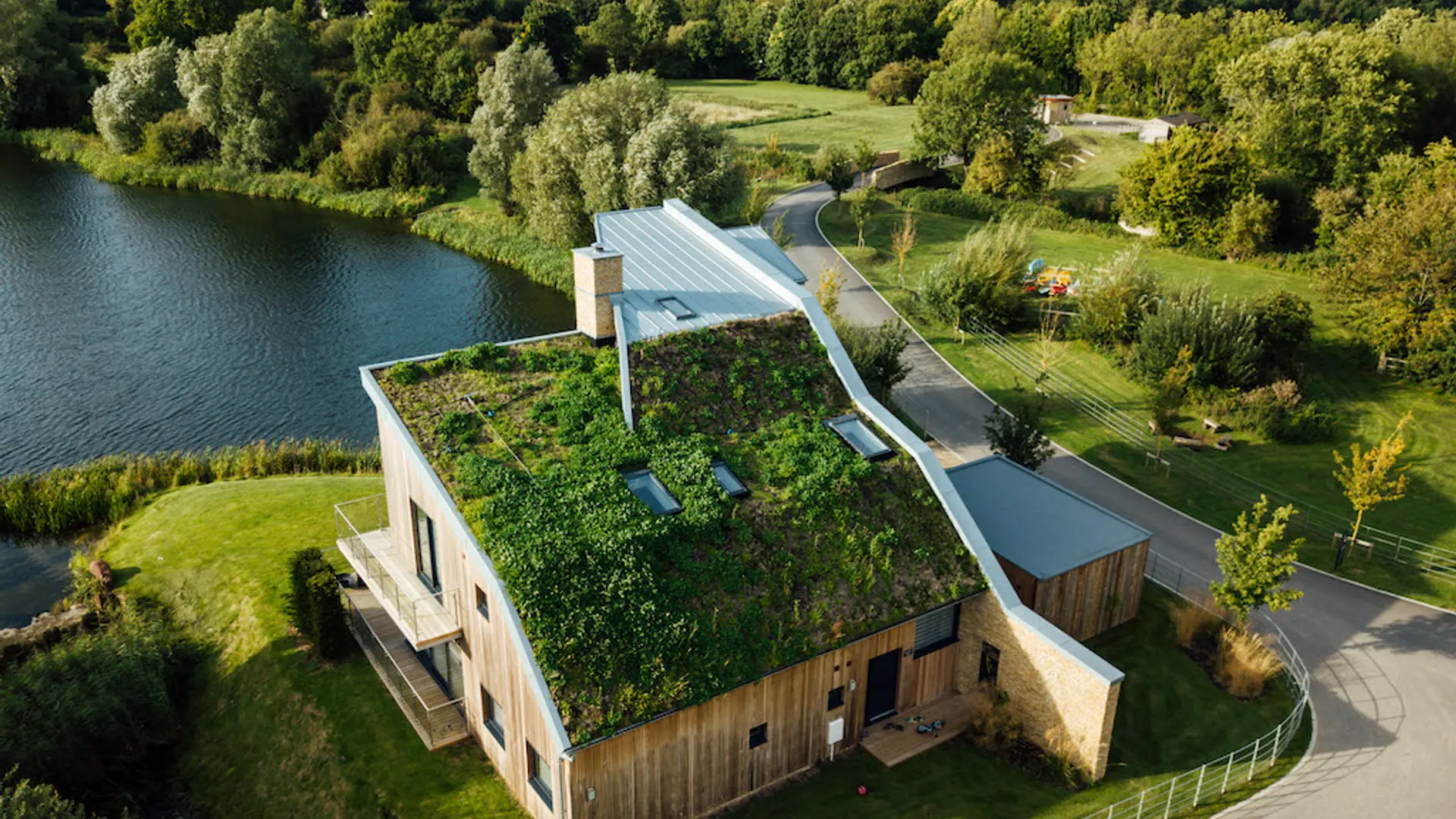The urgency to combat climate change has never been greater, and the construction sector plays a pivotal role in driving carbon emissions. The United Kingdom, renowned for its commitment to sustainability, must take bold and accelerated steps to curb carbon emissions within the construction industry. The UK is committed to achieving carbon neutrality by 2050, and everyone needs to play a crucial role in reducing carbon emissions and promoting sustainable practices.
The way the construction sector consumes resources is not entirely sustainable. First, we must consider what sustainable construction entails, how to measure it, and how green practices can be implemented to achieve greater environmental friendliness.
By adopting innovative technologies, implementing sustainable practices, and fostering collaboration among stakeholders, the UK construction sector can lead the way in achieving significant reductions in carbon emissions.
What Does Sustainable Construction Mean?
Sustainable construction involves designing, constructing, and operating buildings and infrastructure to minimise negative environmental impacts while promoting social and economic well-being. It encompasses a holistic approach that considers the entire life cycle of a construction project, from material extraction and construction to operation, maintenance, and eventual demolition or repurposing.
Examples of sustainable construction practices include:
- Energy-efficient building designs
- The use of renewable energy sources, such as solar panels or wind turbines
- Rainwater harvesting systems
- Green roofs
- The incorporation of natural, sustainable, recycled, or locally sourced materials
- Waste management strategies, such as recycling construction debris and implementing environmentally friendly processes
How Much Does the Construction Industry Contribute to Carbon Emissions?
According to the Construction Industry Council:
"The built environment and construction sector accounts for 38% of global carbon emissions, and it has been estimated that globally we build the equivalent of a city the size of Paris every week."
Building operations are responsible for around 25% of those emissions, while building materials and construction processes account for an additional 13% annually.
What Challenges Does the Construction Sector Face When It Comes to Sustainability?
By 2040, an estimated two-thirds of the global building stock will be buildings that exist today. This is a problem because many existing buildings will continue emitting CO₂ unless significant upgrades are made. Achieving zero emissions from existing buildings requires energy-efficient retrofits, eliminating on-site fossil fuels, and generating 100% renewable energy.
Embodied Carbon
Embodied carbon refers to emissions produced during a building’s entire construction lifecycle — from material extraction through to manufacturing and transportation. Natural materials, such as timber, have a low embodied carbon footprint and even store carbon that was absorbed during the tree’s lifetime, offsetting processing emissions. Conversely, materials like concrete have extremely high embodied carbon values.
Non-Sustainable Materials
Concrete, steel, and aluminium are responsible for an estimated 23% of total global emissions. This challenge can be tackled through better material selection, reducing reliance on carbon-intensive options, and prioritising sustainable materials such as timber, bamboo, and cork.
Availability & Cost of Materials and Technology
While sustainability in construction is progressing, access to sustainable materials and technologies can vary regionally, and the cost of implementation remains a barrier for some projects.
Accelerating Carbon Emission Reductions in the UK Construction Sector: A Call to Action
Matthew Blaylock of Mumford & Wood explains that there are numerous opportunities to create effective and sustainable outcomes within the construction sector.
"Over the past few decades, there has been a dramatic increase in awareness around global warming and the detrimental effects of temperature changes on our environment, largely driven by increased carbon emissions. The built environment — of which the construction sector accounts for a significant portion — is responsible for around 40% of the UK’s carbon emissions. Our industry must work harder to decarbonise and meet national emissions targets of 68% by 2030 and 78% by 2035.
I firmly believe in utilising natural, sustainably sourced materials within the construction sector. Timber is a perfect example — a naturally occurring material that, when managed responsibly, offers a low embodied carbon footprint and removes carbon dioxide from the atmosphere during growth.
Timber also enables faster, more flexible building processes, whether through on-site construction or off-site prefabrication, reducing overall build times and costs. Additionally, timber’s natural insulating properties enhance building energy performance, thereby reducing daily energy consumption. Over the last decade, we’ve seen an encouraging increase in designers, contractors, and developers prioritising sustainability. However, unless legislation is strengthened, much of the industry risks falling behind in meeting national targets."
How Can We Reduce Carbon Emissions?
Embrace Low-Carbon Materials and Design
Using sustainable materials, such as recycled steel, responsibly sourced timber, and low-carbon concrete, can dramatically reduce emissions. Prioritising energy-efficient design — including passive heating and cooling, renewable energy generation, and enhanced insulation — can reduce a building’s operational carbon footprint.
Implement Offsite Construction and Modular Techniques
Offsite construction and modular techniques offer efficient resource use, reduced waste, and lower emissions from transportation. Prefabricated solutions also improve construction quality and reduce site timescales.
Harness Digital Technologies and Building Information Modelling (BIM)
Building Information Modelling (BIM) optimises project planning, reduces errors, improves energy management, and cuts waste. When paired with emerging AI tools, it enables better carbon-saving decisions across projects.
Promote Circular Economy Principles
The construction industry must adopt circular economy thinking: reusing, recycling, and repurposing materials wherever possible. This includes robust waste management systems, favouring deconstruction over demolition, and stronger partnerships with material recycling initiatives.
Invest in Renewable Energy Generation
Construction sites themselves can be greener by integrating on-site renewable energy systems like solar panels and battery storage, reducing reliance on diesel generators and lowering emissions throughout the building process.
Strengthen Collaboration and Knowledge Sharing
Stronger collaboration between contractors, architects, engineers, policymakers, and manufacturers is essential. Sharing knowledge, developing case studies, and promoting best practices through forums and platforms can accelerate progress across the sector.
Align Policies and Regulations
The government must provide clear policy direction, stronger incentives for sustainable building, and higher minimum energy efficiency requirements. Certifications such as BREEAM can also drive sustainable standards across the industry.
Conclusion
The UK construction sector must seize every opportunity to curb carbon emissions. Through sustainable design, innovative technology, better collaboration, and stronger regulations, we can drastically cut our environmental impact.
The time for action is now — and with a united effort across the sector, the UK can lead the world towards a greener, more sustainable future.


















